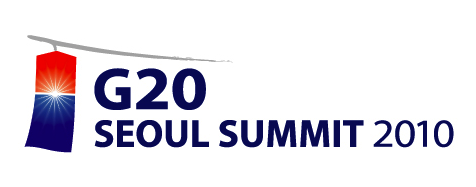Published October 03, 2010 | Reuters
By Rachel Armstrong
SINGAPORE, Oct 4 (Reuters) - A global regulatory bodytasked by the G20 with devising ways to prevent a repeat of thefinancial crisis says improving oversight of the "shadowbanking" system will be one of its main priorities in 2011.
Mario Draghi, head of the Financial Stability Board, arguesthat credit provision in the shadow banking system -- conductedby loosely regulated non-bank financial firms -- was a keycontributor to the crisis.
But as banks face tighter supervision and tough new capitalrules, there are fears that more credit activity will move outof the regulated banking industry and into this shadow system.
WHAT IS THE "SHADOW BANKING" SYSTEM?
On a basic level shadow banking refers to any provision ofcredit that takes place outside of the traditionaldeposit-funded bank lending system. This includes institutionsas diverse as pawnbrokers and consumer finance companies tosecurities dealers and firms issuing corporate bonds.
However regulators say they are most concerned with thesystem of firms, instruments and markets that "mirror"commercial banking by enabling funds borrowed from short-termsources such as the money markets to be invested inlonger-term, less liquid assets.
The web of institutions engaged in this form of shadowbanking ranges from hedge funds, investment banks and consumerfinance companies to the complex world of structured investmentvehicles and asset backed commercial paper issuers.
HOW DOES IT CREATE CREDIT?
Rather than the traditional bank model of using deposits tofund loans, much of the shadow banking system creates creditthrough a complex process of securitisation, the use ofcommercial paper and the repo market.
Securitisation enables fairly illiquid assets such asmortgages to be converted into tradable asset-backedsecurities.
Shadow banks can use these securities as collateral toborrow short-term money in the repo market or from money marketfunds. and then use this cash to fund other lending activities.
HOW BIG IS SHADOW BANKING?
While a precise estimate is impossible, research from theFederal Reserve Bank of New York estimated that there wasaround $16 trillion worth of liabilities in the shadow bankingsystem during the first quarter of 2010, exceeding the size ofthe traditional banking system, which is estimated at about $13trillion.
This, though, is lower than the size of the market beforethe global financial crisis, when as much as $20 trillion wasthought to be involved.
WHY ARE REGULATORS WORRIED?
Whereas bank "runs" can usually be prevented bydeposit-protection schemes, there is no such safety net for theshadow system. But it was a "run" on the shadow banking systemthat arguably triggered the global financial crisis.
When U.S. sub-prime mortgages began to default in 2007,shadow banks found it increasingly difficult to use securitieslinked to these mortgages as collateral in the repo market,meaning they started to lose access to their main source offunding.
Then when Lehman Brothers failed, investors pulled theircash out of money market funds, fearful of their level ofexposure to the stricken investment bank.
Now, with banks facing tougher capital rules and increasedsupervision, the fear is that more money will move out of thebanking sector back into the shadow system.
WHAT CAN BE DONE TO CONTROL SHADOW BANKING? Regulators haveproposed a range of solutions, including requiring theinstitutions that most closely resemble banks, such as moneymarket mutual funds, to be regulated as such.
There are also calls for more regulation to be done onasset classes rather than on institutions. This would mean thatthere would be minimum capital requirements such as haircutsand loan-to-value ratios on the lending of certain securitiesregardless of the parties are involved.
Regulators and central bankers have also said they want tohave greater powers to help them shift the perimeter ofregulation more quickly in future to impose rules on riskybehaviour outside their main purview.
However, many experts in financial regulation argue thatmarkets will always find a way round such rules, so the bestregulators can do is to improve their monitoring of the sectorso that systemic risks can be spotted sooner. (Editing by Alex Richardson)

댓글 없음:
댓글 쓰기